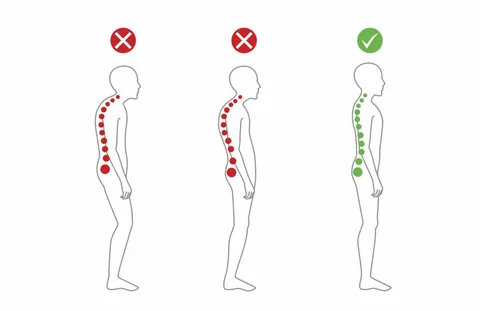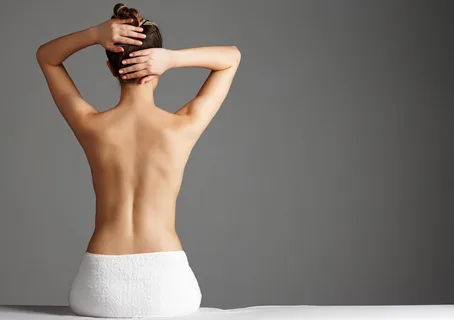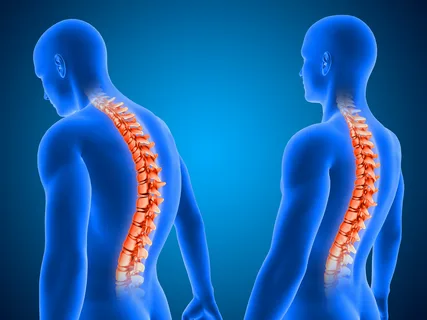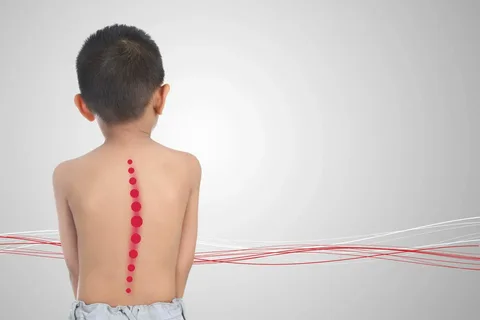Postural disorders and their importance for dentists
Machine translation
Original article is written in RU language (link to read it) .
Any violations of posture are associated with functional failure of the muscle mass of the body as a whole and with low tone of individual muscle groups, which is determined by the type of violation. The relationship between health, posture and bite is now scientifically proven. Poor posture causes compensatory changes that occur throughout the body, the dental system is no exception.
Osteopathic protocols for the treatment of TMJ dysfunctions and occlusion disorders in the Online Course of Osteopathic Dentistry: new horizons in the treatment of patients .
Poor posture is a serious problem in modern reality. Its pathology affects the architecture of the body, facial aesthetics, and can also lead to disturbances in certain functions: breathing, speech production, chewing and swallowing.
What is posture
Posture is the habitual position of the body in space at rest and when performing movements. “Habitual position” is a motor stereotype, a body position that is regulated unconsciously. Posture is associated with a familiar posture, bearing, and demeanor. A person has only one habitual posture.

Figure 1. Pathological and correct posture.
The formation of posture is determined by the following factors:
anatomical,
physiological.
A person is not able to influence the anatomical factor, since it is hereditary (the length of the limbs, the angle of the pelvis, the structural features of the chest).
The physiological factor combines the nuances of the individual formation of motor habits, postural static reactions and physical exercises used for this.
Correct posture
A casually standing person, with no postural abnormalities, touches the wall at five points:
back of the head
shoulder blades,
buttocks,
shins,
heels.
Normally, the head and spinal column do not deviate from the vertical axis. When eating or performing sedentary work, the feet are on the floor, the back is straight, the head is tilted no more than 30°.

Figure 2. Healthy spine.
Optimal sleep for correct posture is lying on your side or back, on a hard mattress that prevents spinal deformation, with a relatively low pillow.
Normal posture ensures the correct redistribution of gravity, pressure and muscle traction on the lower jaw, as a result of which the latter occupies a position that is characteristic of a correct bite; normal formation of the bones of the maxillofacial area occurs under the influence of optimal loads.
Pathological posture
The following types of pathological posture are distinguished: hyperlordosis, hyperkyphosis, scoliosis. They are characterized by displacement of the lower jaw, and in particularly severe situations it can be pressed against the chest.
Other factors that negatively affect bite formation:
using a high pillow for sleeping;
sleeping on a soft feather bed instead of an orthopedic mattress,
the habit of putting your hands under your cheeks while sleeping;
using a desk that is not suitable for the child’s age.
Each age period is characterized by unique, gradually changing body proportions. To maintain a stable vertical position in the space of the torso, muscular efforts and a determined arrangement of body parts are required.
In the preschool period, normal posture is characterized by the following indicators:
the body is located vertically;
the chest is symmetrical,
shoulder blades protrude slightly back
the stomach protrudes forward;
lumbar lordosis begins to be determined.

Figure 3. Spinal column.
Identification of the listed signs in a teenager will indicate a violation of posture, since the normal posture of a teenager is determined by the following distinctive characteristics:
on straightened legs, the head and torso occupy a vertical position;
shoulders are lowered, located at the same level;
symmetrical chest;
shoulder blades pressed to the back;
in girls the mammary glands, and in boys, the halos are located symmetrically, at the same level;
the curves of the spine are well defined, with emphasized lordosis typical for girls, and kyphosis for guys;
the stomach is retracted relative to the chest, flat;
the spinous processes of the vertebrae form a straight line;
symmetrical, pronounced waist triangles.

Figure 4. Pathological posture in a child.
Poor posture in different planes
Poor posture in the sagittal plane is associated with a pathological increase in the natural curves of the spine: round, stooped, round-concave; or pathological decrease: plano-concave, flat back.
In the frontal plane, postural disorders are associated with an asymmetrical position relative to the vertical axis of the torso and limbs:
In the front, there is asymmetry in the line of the shoulders, mammary glands, and poor definition of the waist triangle on one side.
Posteriorly – displacement of the angles of the scapulae and spinous processes relative to the vertical line.
With any type of postural disorder, functional failure of the motor muscles and weak tone of individual muscle groups are determined.
A round, stooped back is characterized by weakness and low tone of the muscles of the trunk and shoulder girdle.
A round-concave back is characterized by weak gluteal muscles, as well as the muscles of the back of the thigh, low abdominal tone and, as a result, prolapse of the internal organs.
A flat back is characterized by functional failure of the muscles of the shoulder girdle and back.
Curvature of the spine in the frontal plane is accompanied by different tone of the muscles of the same name on the left and right parts of the body.
Poor posture in the initial stages is not yet a disease, but a functional disorder of the musculoskeletal system, which, with appropriate treatment, is capable of reversal. It is very important to instill in a child the skill of correct posture from childhood, and when the first signs of a violation appear, begin correction.
Posture and balance at rest and in movement
The most important thing is to maintain correct posture when making movements and changing position in space. Balance is determined by the relative position in space of the parts of the body vertically and horizontally.
Effect of head position on postural balance
If the head is lowered and tilted anteriorly, this will lead to more pronounced thoracic kyphosis and a flattening of the lumbar lordosis (sagittal plane).
Compensation for the usual tilt of the head to the side occurs due to the elevation of the shoulder; smoothing is observed on the opposite side of the waist triangle (frontal plane).
If incorrect head position remains unattended for a long period of time, this leads to the formation of spinal deformity - scoliosis.
The lower jaw is the most mobile part of the head; it largely determines the postural balance of the body. Prolonged static retention of the lower jaw in a vicious position has a negative effect on the spine.
The cervical region tilts when the mouth opens in the direction of the displacement of the lower jaw and turns in the opposite direction. This clinic is accompanied by headaches associated with neuralgia of the greater occipital nerve.
Prevention and treatment
To ensure harmonious development, in addition to correcting the bite, it is necessary to address the functional viability of the masticatory muscles and skeletal muscles of the whole body. The targeted use of physical therapy and correction of emerging disorders of the musculoskeletal system will help to achieve a significant improvement in the patient’s condition and eliminate errors that often occur in the complex treatment of pathological posture and scoliosis, as well as malocclusion.

Figure 5. Posture correction.
In the case of distal occlusion, efforts must be directed toward reducing the severity of lumbar lordosis and thoracic kyphosis.
With mesial occlusion, physical therapy is aimed at normalizing the position of the torso at rest.
Performing a specially designed set of corrective exercises significantly reduces the duration of orthodontic treatment and also helps prevent recurrence of occlusion disorders.
Swimming is the most effective method of normalizing posture. In addition, many rehabilitation methods that are widely used for postural pathology are perceived negatively by the child, but children love swimming and consider it an exciting game. When swimming, the body becomes weightless, so the spine takes a break from gravitational loads, but at the same time, swimming helps strengthen the muscle corset, harmonizes muscle tone, and improves coordination of movements.
Pay attention to the course for learning the basics of the osteopathic approach in dentistry Postura, TMJ, occlusion: osteopathic approach .
